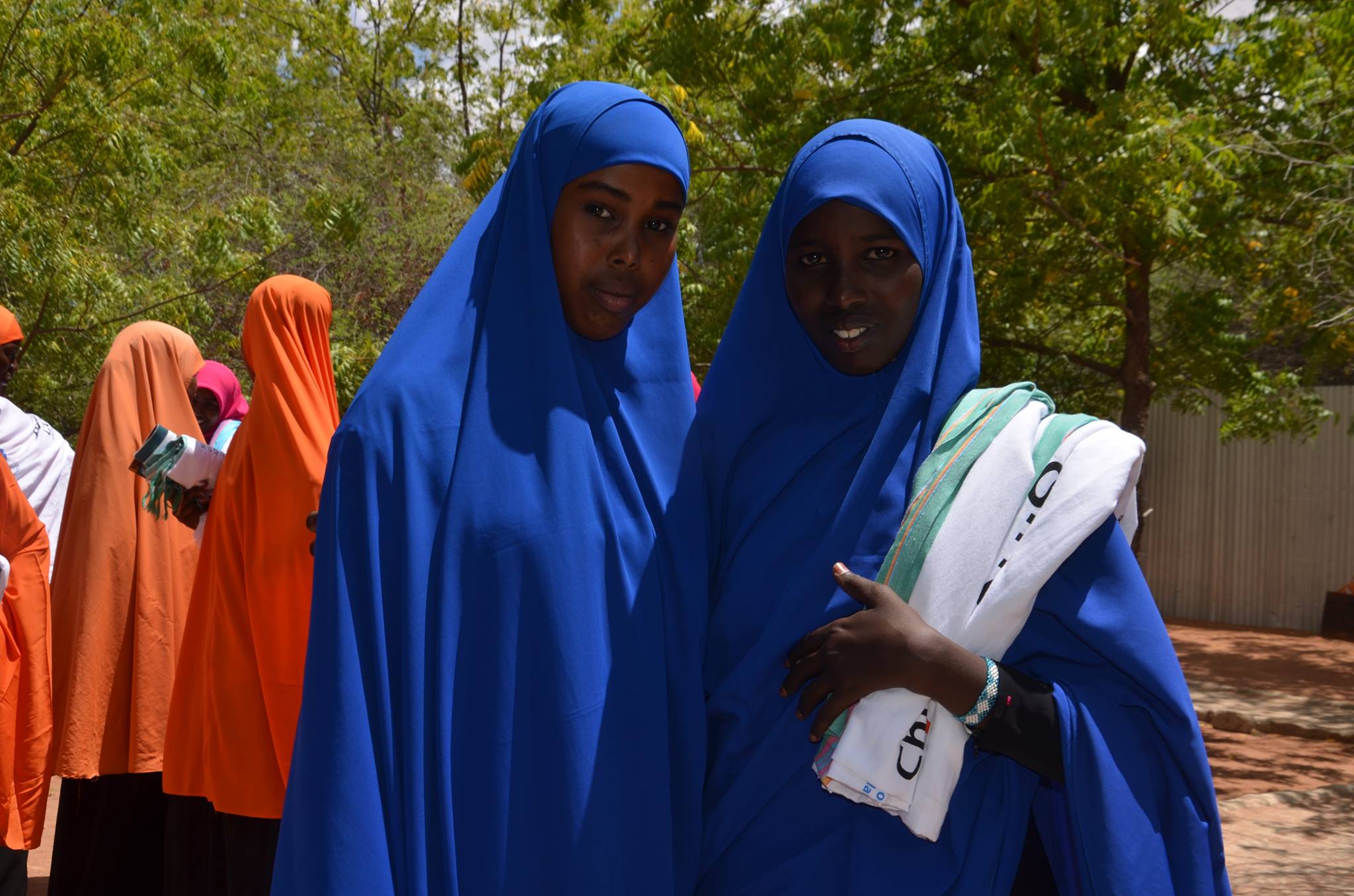This years’ theme for the Day of the Girl, EmPOWER Girls: Before, during and after crises, fits perfectly with the Conference which aims at exposing the girls to practical classic solutions to girl child education amidst the many barriers faced by refugee school girls in the Dadaab context.

Nufsa Ibrahim and Muslima Abdi from Amani Primary School in Hagadera at the Girls Conference. UNHCR/B.Rono
150 refugee school girls from various schools under UNHCR education partner Lutheran World Federation Kenya (LWF) attended the Girls’ Conference in Dadaab.
The Conference was held a few days prior to the International Day of the Girl which seeks to highlight and address the needs and challenges girls face, while promoting girls’ empowerment and the fulfilment of their human rights.
This years’ theme for the Day of the Girl, EmPOWER Girls: Before, during and after crises, fits perfectly with the Conference which aims at exposing the girls to practical classic solutions to girl child education amidst the many barriers faced by refugee school girls in the Dadaab context.
Dubbed The Girls’ Conference 2017, and funded by Church of Sweden, this was a maiden activity in LWF interventions on girls’ empowerment in Dadaab operation.
Some of the topics of discussion during the Conference were achieving your dreams, gender roles and stereotypes, and passion and career path.
The girls were also empowered as peer educators and mentors to other girls in the 7 LWF-operated primary schools in Hagadera camp.
The 3 day conference was facilitated by key female guest speakers from similar backgrounds but who have excelled in education, business, careers and philanthropy.
According to LWF Senior Education Officer, Geoffrey Shikuku, LWF looks to make this an annual event with even more mentors in future meetings.
“Empowering girls means empowering communities and we are very keen as LWF to ensure that we continue with this initiative. Some of the girls in the workshop are as young as 11 and already want to be pilots or doctors. We must encourage and empower them,” he said.
According to UN Women, there are 1.1 billion girls in the world, and every one of them deserves equal opportunities for a better future. They are a source of energy, power and creativity. They can drive change and help build a better future for all. Yet, most girls face disadvantage and discrimination on a daily basis, and those living through crises are suffering even more.
The United Nations reports that ‘every 10 minutes, somewhere in the world, an adolescent girl dies as a result of violence. In humanitarian emergencies, gender-based violence often increases, subjecting girls to sexual and physical violence, child marriage, exploitation and trafficking. Adolescent girls in conflict zones are 90 percent more likely to be out of school when compared to girls in conflict-free countries, compromising their future prospects for work and financial independence.
As at 10 October 2017, Dadaab population stood at 54,763 households consisting of 239,327 individuals of which 51% (121,152) were female. The population of girls aged 0-17 years old was 67,506 as at 30 September 2017.
Share on Facebook Share on Twitter